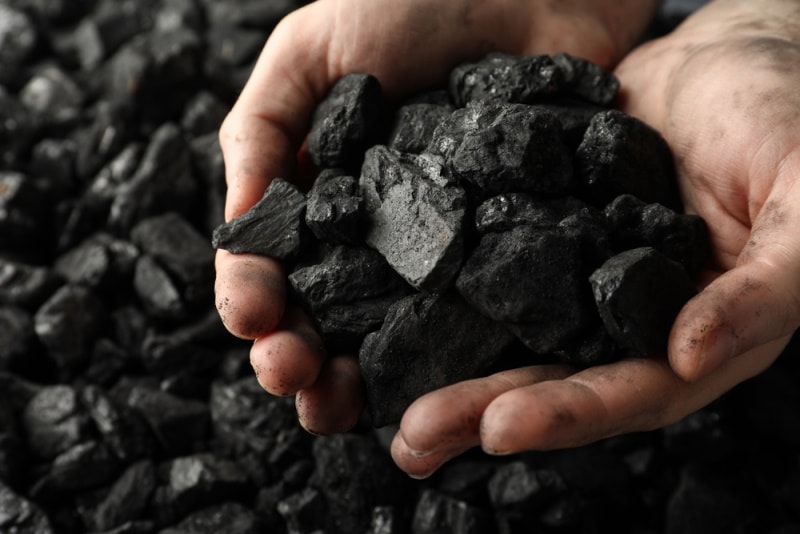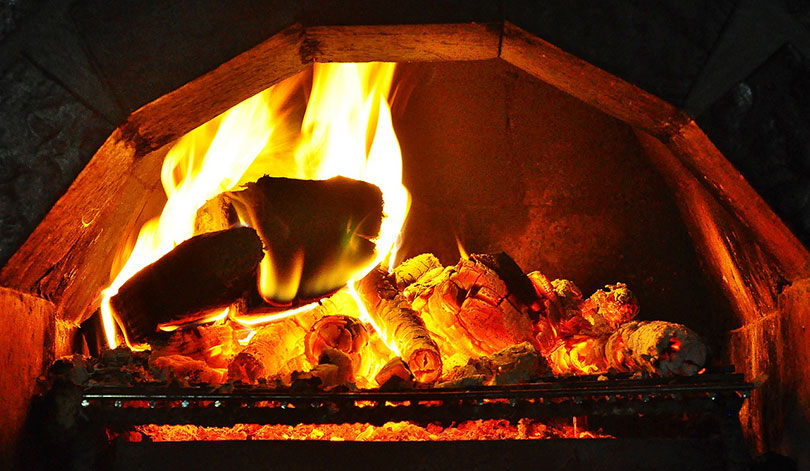Can You Burn Coal in a Fireplace? Safety Guide, Risks & Alternatives
-

- Last updated:

Admit it: having a burning fireplace in your home creates a cozy and welcoming aura. It also warms up the entire room, especially during winter, making the cold nights more bearable.
Most houses have well-designed fireplaces that can accommodate firewood and coal. While coal burning is not that common in most households, people still use it for fuel. Yes, it burns longer, but it’s not ideal for a home setup. So, how safe is burning coal in a fireplace?
In this article, we’ll talk about the adverse effects of burning coal in your fireplace and what you can use as a substitute.

What Is Coal?
Coal is a black or brown sedimentary rock containing many carbon and hydrocarbon molecules. It’s a nonrenewable energy source formed after being compressed into the earth for more than a million years. Its energy comes from dead and decayed plants and animal remains that died and were buried under the earth’s crust.
The heat and pressure in the earth’s crust turn the dead organic matter into coal. Since it takes such a long time to form, it’s not a sustainable energy source.

How to Burn Coal in a Fireplace
Most fireplaces are not made to handle coal. If you want to burn coal in your fireplace, keep in mind that it needs more ventilation than fireplaces that burn firewood. So, check with an expert to ensure that your fireplace has enough ventilation and does not force the smoke to the rest of the room instead of pushing it out through the chimney.
To burn coal in your fireplace, there are a few steps you need to follow:
- Ensure that the fireplace is clean and the chimney is not clogged.
- Crumple a few sheets of paper and tuck them under the grate.
- Arrange a few pieces of kindling on top of the papers.
- Light the kindling and pour coal on top.
- Add small amounts of coal to avoid overcrowding the grate.
Ensure you purchase the right kind of coal for your fireplace. The most recommended type of coal comes in small chunks with less dust and produces less smoke when burnt.
Your fireplace grate should also be suitable to handle burning coal; it should be made of hard metal with smaller spaces to prevent the coal from falling out.

Why You Should Not Burn Coal in Your Fireplace
Burning coal inside the house for heating purposes produces gas emissions that contain harmful chemicals such as carbon monoxide, polycyclic aromatic hydrocarbons, and benzene.
A study conducted in China, where many people use coal in the fireplace, shows that most of them have been exposed to coal emissions. Some of the side effects of inhaling these emissions include:
1. Lung Cancer
Lung cancer occurs when a tumor grows in the lungs and compromises their functioning. Remember, the lungs are porous and take in these emissions when you inhale. Ultimately, people who use coal in their fireplaces have a high risk of developing lung cancer. It is also one of the leading causes of death.
The risk of lung cancer increases when you expose yourself to coal emissions over time. Therefore, if you burn coal in your fireplace often, you directly increase the risk of your family members developing lung cancer.
2. Respiratory Conditions
Coal emissions can cause other respiratory issues, such as asthma, and in most cases, it takes a while to start seeing the effects. If you have to use coal in your fireplace, you can reduce exposure by installing functional chimneys.

3. Miscarriages and Premature Death
Burning coal in the house can lead to fetal death and miscarriages. Studies by the Saban Research Institute showed a significant correlation between coal use and miscarriages. When pregnant women inhale the emissions from burning coal, these gasses make their way into the bloodstream and the placenta. This may lead to a miscarriage, poor organ development, and defects in the child.
Environmental Effects of Burning Coal
Producing and burning coal has significant effects on the environment. Coal mining is typically done by mountaintop removal using explosives which changes the landscape. It can also lead to water and air pollution.
Air pollution can also occur after emissions resulting from coal combustion are released into the environment. Some of the gasses emitted in the air include:
- Sulfur dioxide (SO2): Contributes to acid rain, which can damage and corrodes metals and buildings.
- Nitrogen oxides (NOX): Contribute to smog and are a leading factor of respiratory diseases.
- Carbon dioxide (CO2): A primary greenhouse gas produced from burning fossil fuels, including coal, oil, and natural gas.
- Fly ash: Fly ash is a powder produced when coal is burnt. It can lead to respiratory congestion and lung cancer.

What You Shouldn’t Use in Your Fireplace
While many materials are flammable and can be used in the fireplace, most of them are not safe. Some of the materials you shouldn’t burn in your fireplace include:
- Cardboard: You should never burn cardboard boxes in your fireplaces. That includes cereal boxes, shipping boxes, and food boxes. Most of these boxes have a wax or paint coating, which releases toxic emissions.
- Dryer lint: Dryer lint is highly flammable and is usually used to start fires. However, it’s made of synthetic material, releases toxic chemicals when burned, and can cause asthmatic attacks.
- Treated wood: Wood that has been treated or coated with paint and pressure treated can release harmful gasses when burnt. This chemical often irritates the eyes, skin, and lungs and can leave the fireplace and chimney covered in soot. Christmas trees and driftwood also fall into this category.
- Wet wood: Although most people refrain from burning damp wood in their fireplace because it takes longer to ignite, there are many other reasons why it does not belong in the fireplace. Wet wood produces a lot of smoke when burning, creating creosote buildup in the chimney. This buildup is highly flammable and can cause a chimney fire.


Fuel Sources You Can Use in Your Fireplace Instead of Coal
The harmful effects of using coal in the fireplace far outweigh the benefits, which is why you need to consider other safer solutions. Luckily, there is a recommended list of indoor fuels that you can use.
The best option is using dry, seasoned wood. Preferably, you should use seasoned wood that has been sundried as it has no moisture and has a longer burn time. Hardwoods are also better for use in indoor fireplaces than softwood.
If you frequently use coal in your fireplace, you should consider stopping immediately and doing a medical checkup to ensure you’ve not developed any respiratory diseases.
Featured Image Credit: New Africa, Shutterstock
Contents
